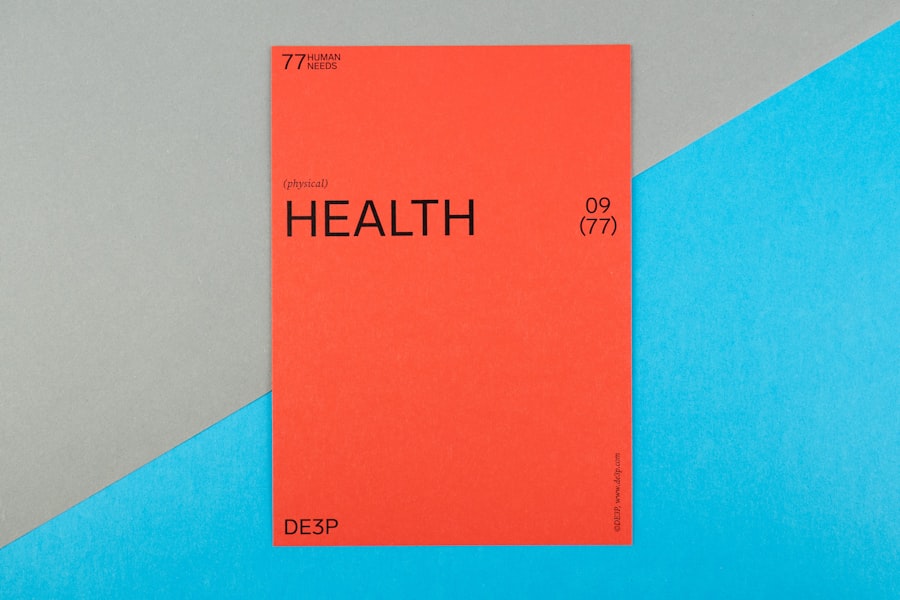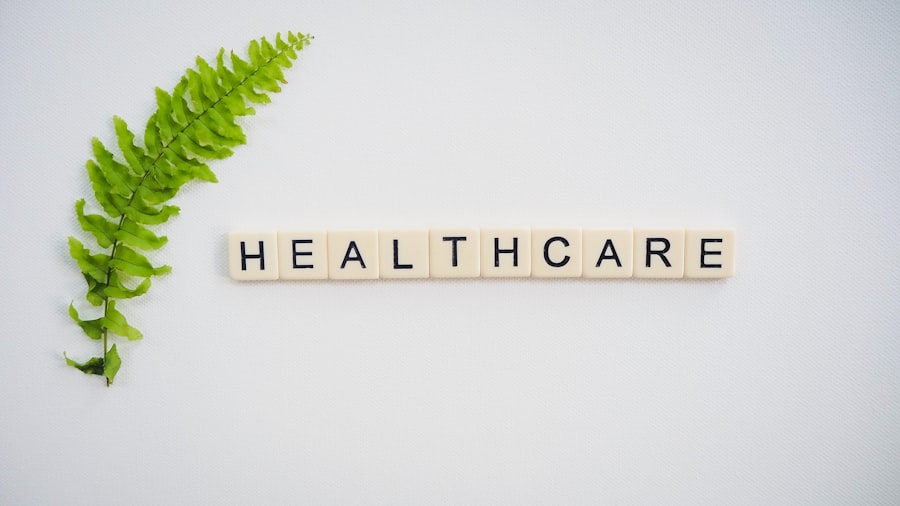In the rapidly evolving landscape of healthcare, content marketing has emerged as a pivotal strategy for organizations aiming to connect with patients and stakeholders. The significance of healthcare content marketing lies in its ability to educate, inform, and engage audiences while simultaneously building trust and credibility. Unlike traditional marketing approaches that often focus solely on promoting services or products, content marketing emphasizes delivering valuable information that addresses the needs and concerns of patients.
This shift towards a more patient-centric approach is essential in an era where consumers are increasingly seeking reliable information online before making healthcare decisions. Moreover, healthcare content marketing serves as a bridge between providers and patients, fostering a deeper understanding of health issues, treatment options, and preventive measures. By creating informative blog posts, videos, infographics, and other forms of content, healthcare organizations can demystify complex medical topics and empower patients to take charge of their health.
This not only enhances patient engagement but also positions healthcare providers as authoritative voices in their respective fields. As patients become more informed, they are more likely to trust and choose providers who demonstrate expertise through well-crafted content.
Key Takeaways
- Healthcare content marketing is essential for building trust and educating patients effectively.
- Identifying and understanding your target audience ensures content relevance and engagement.
- Utilizing SEO and digital platforms boosts visibility and reach within the healthcare sector.
- Collaborations with influencers and thought leaders enhance credibility and audience connection.
- Compliance with healthcare regulations is critical to maintain ethical standards and avoid legal issues.
Identifying Your Target Audience in the Healthcare Industry
Understanding your target audience is a fundamental step in developing an effective healthcare content marketing strategy. The healthcare landscape is diverse, encompassing various demographics, including age groups, socioeconomic statuses, and health conditions. Each segment has unique needs and preferences that must be considered when crafting content.
For instance, younger audiences may prefer digital formats such as videos and social media posts, while older adults might gravitate towards more traditional formats like newsletters or printed materials. Conducting thorough market research can help identify these segments and tailor content accordingly. Additionally, it is crucial to consider the specific health concerns and questions that your target audience may have.
For example, a healthcare provider specializing in diabetes management should create content that addresses common queries about blood sugar control, dietary recommendations, and lifestyle changes. By understanding the pain points and interests of your audience, you can create targeted content that resonates with them on a personal level. Utilizing tools such as surveys, social media analytics, and patient feedback can provide valuable insights into the preferences and behaviors of your audience, allowing for more effective content creation.
Crafting Compelling and Relevant Content for Healthcare Consumers

Creating compelling content in the healthcare sector requires a delicate balance between providing accurate information and engaging storytelling. Healthcare consumers are often overwhelmed with information, making it essential to present content in a way that is both informative and relatable. Utilizing storytelling techniques can help humanize complex medical topics, making them more accessible to a broader audience.
For instance, sharing patient success stories or testimonials can illustrate the impact of treatments or services in a way that resonates emotionally with potential patients. In addition to storytelling, it is vital to ensure that the content is relevant and timely. Keeping abreast of current health trends, emerging research, and seasonal health issues allows healthcare marketers to produce content that addresses pressing concerns.
For example, during flu season, creating articles about vaccination benefits or tips for preventing illness can attract attention from individuals seeking guidance. Furthermore, incorporating multimedia elements such as videos or interactive quizzes can enhance engagement and improve the overall user experience.
Leveraging Social Media and Digital Platforms for Healthcare Content Marketing
| Metric | Description | Typical Value/Range | Importance for Healthcare Content Marketing |
|---|---|---|---|
| Engagement Rate | Percentage of audience interacting with content (likes, comments, shares) | 1% – 5% | Measures how well content resonates with healthcare audience |
| Click-Through Rate (CTR) | Percentage of users clicking on links within posts | 0.5% – 3% | Indicates effectiveness of call-to-action in healthcare campaigns |
| Follower Growth Rate | Rate at which social media followers increase over time | 5% – 15% monthly | Reflects expanding reach and brand awareness in healthcare sector |
| Content Share Rate | Frequency at which content is shared by users | 0.2% – 1% | Helps amplify healthcare messages and increase organic reach |
| Video View Completion Rate | Percentage of viewers watching healthcare videos to the end | 40% – 70% | Indicates content relevance and engagement in video marketing |
| Conversion Rate | Percentage of users completing desired action (e.g., appointment booking) | 2% – 10% | Measures success of healthcare content in driving patient actions |
| Average Session Duration | Average time users spend on healthcare content platforms | 2 – 5 minutes | Shows user interest and content quality on digital platforms |
| Hashtag Performance | Engagement and reach generated by healthcare-related hashtags | Varies widely | Enhances discoverability and community building in healthcare topics |
Social media has transformed the way healthcare organizations communicate with their audiences. Platforms such as Facebook, Twitter, Instagram, and LinkedIn offer unique opportunities to share content, engage with patients, and build community. By leveraging these platforms effectively, healthcare marketers can reach a wider audience and foster meaningful interactions.
For instance, live Q&A sessions on platforms like Instagram or Facebook can provide real-time answers to patient inquiries, enhancing transparency and trust. Moreover, digital platforms allow for targeted advertising that can reach specific demographics based on interests, location, and behavior. This capability is particularly beneficial in the healthcare sector, where reaching the right audience is crucial for effective communication.
Creating shareable content that encourages users to engage—such as infographics or educational videos—can also amplify reach through organic sharing. By utilizing social media analytics tools, healthcare organizations can track engagement metrics and refine their strategies based on what resonates most with their audience.
Utilizing SEO Strategies to Increase Visibility in the Healthcare Industry
Search Engine Optimization (SEO) is an essential component of any successful healthcare content marketing strategy. With millions of searches conducted daily for health-related information, optimizing content for search engines ensures that it reaches those who need it most. Effective SEO strategies involve keyword research to identify terms and phrases that potential patients are using when searching for information.
Incorporating these keywords naturally into website content, blog posts, and meta descriptions can significantly improve visibility on search engine results pages. In addition to keyword optimization, creating high-quality backlinks from reputable sources can enhance domain authority and improve search rankings. Collaborating with other healthcare organizations or contributing guest posts to established medical blogs can facilitate this process.
Furthermore, ensuring that your website is mobile-friendly and has fast loading times is crucial in today’s digital landscape where users expect seamless experiences across devices. Regularly updating content to reflect the latest medical guidelines or research findings also signals to search engines that your site is a reliable source of information.
Measuring the Effectiveness of Your Healthcare Content Marketing Campaign

To determine the success of a healthcare content marketing campaign, it is essential to establish clear metrics for evaluation. Key performance indicators (KPIs) such as website traffic, engagement rates (likes, shares, comments), conversion rates (appointments booked or inquiries made), and lead generation should be monitored regularly. Utilizing analytics tools like Google Analytics can provide insights into user behavior on your website, helping identify which types of content are most effective in driving traffic and engagement.
Additionally, qualitative feedback from patients can offer valuable insights into how well your content resonates with your audience. Surveys or feedback forms can be used to gauge patient satisfaction with the information provided and its relevance to their needs. By analyzing both quantitative data and qualitative feedback, healthcare organizations can refine their content strategies over time to better meet the needs of their audience.
Collaborating with Influencers and Thought Leaders in the Healthcare Field
Influencer marketing has gained traction across various industries, including healthcare. Collaborating with influencers or thought leaders who have established credibility in the medical field can enhance your organization’s visibility and authority. These individuals often have dedicated followings who trust their opinions on health-related matters.
By partnering with them for content creation—such as guest blog posts, social media takeovers, or joint webinars—healthcare organizations can tap into new audiences while benefiting from the influencer’s expertise. When selecting influencers for collaboration, it is crucial to ensure alignment with your organization’s values and mission. Authenticity is key; audiences are quick to detect insincerity or misalignment between an influencer’s message and your brand’s ethos.
Additionally, leveraging local influencers who resonate with specific communities can enhance outreach efforts in targeted demographics. This approach not only broadens your reach but also fosters community engagement by connecting with individuals who are already trusted voices within those communities.
Staying Compliant with Healthcare Regulations in Content Marketing
Navigating the regulatory landscape is a critical aspect of healthcare content marketing. Organizations must adhere to various laws and guidelines designed to protect patient privacy and ensure ethical communication practices. In the United States, regulations such as the Health Insurance Portability and Accountability Act (HIPAA) impose strict rules regarding patient information confidentiality.
Any content that includes patient testimonials or case studies must obtain explicit consent from individuals involved to avoid potential legal repercussions. Furthermore, claims made in healthcare marketing materials must be substantiated by credible evidence to avoid misleading consumers. This includes ensuring that any statistics or health claims are backed by reputable studies or expert opinions.
Staying informed about changes in regulations and best practices is essential for maintaining compliance while effectively engaging with audiences through content marketing efforts. Regular training for marketing teams on compliance issues can help mitigate risks associated with non-compliance while fostering a culture of ethical communication within the organization.



